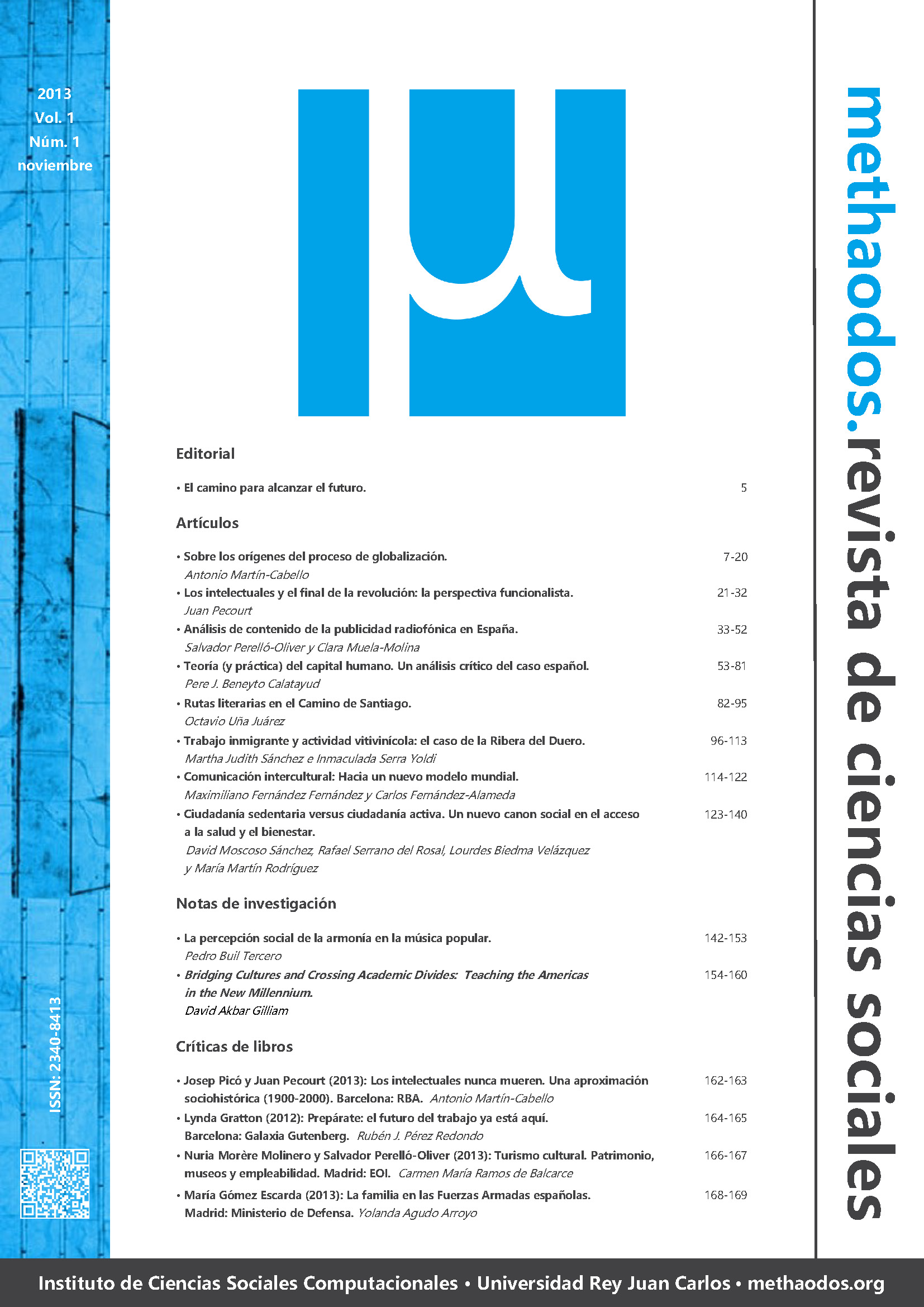The social perception of harmony in popular music
Main Article Content
Abstract
The aim of this study is to demonstrate the influence that an harmonic pattern, placed in different pop music songs, can have over the audience. This is an important factor within the "greatest hits" media phenomenon and can help both to clarify the impact on society and to achieve a better understanding of the reception of new hits in the field of popular music. It is our understanding that success is conditioned by the said pattern, often located in radio-formulas and websites which enable the listening of music via streaming. We shall see how a purely musical parameter, in this case, harmony, can influence the audience at the time of reception and evaluation of new releases launched by the greatest links of the music industry such as producers, record companies or radio stations.
Downloads
Article Details
References
Adorno, T. W. (1966): Disonancias. Músicas en el mundo dirigido. Madrid: Rialp.
Ariño, A. dir. (2006): La participación cultural en España. Madrid: Fundación Autor.
Baricco, A. (2008): El alma de Hegel y las vacas de Wisconsin: una reflexión sobre música culta y modernidad. Madrid: Siruela.
Birrer, F. (1985): “Definitions and research orientation: Do we need a definition of popular music?”, Popular Music Perspectives, 2: 99-105. Göteborg and Exeter: IASPM.
Bourdieu, P. (1998): La distinción: Criterios y bases sociales del gusto. Madrid: Taurus.
Drösser, C. (2012): La seducción de la música. Los secretos de nuestro instinto musical. Barcelona: Ariel.
Eco, U. (1984): Apocalípticos e Integrados. Barcelona: Lumen.
Fouce, H. (2002): El futuro ya está aquí. Música pop y cambio cultural en España, 1978-1985. Madrid: Universidad Complutense.
Hennion, A. (2002): La pasión musical. Barcelona: Paidós.
Hormigos, J. (2012): “Sociología de la Música. Teorías clásicas y puntos de partida en la definición de la disciplina”, Barataria. Revista Castellano-Manchega de Ciencias Sociales, 14: 75-84.

